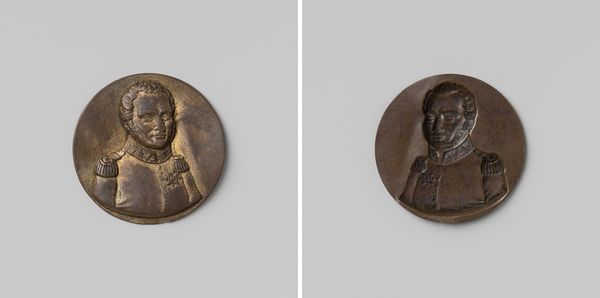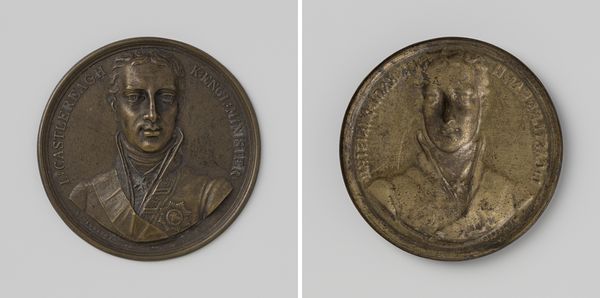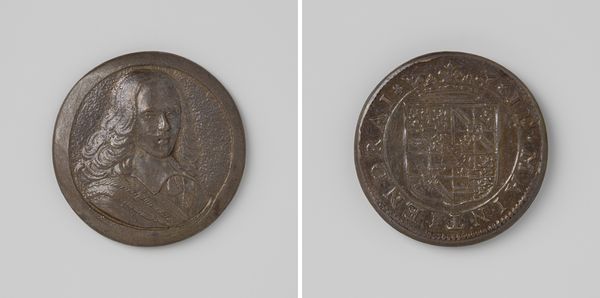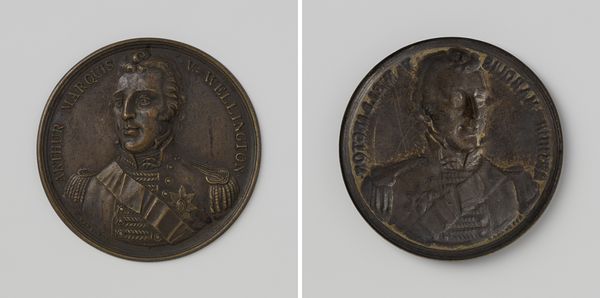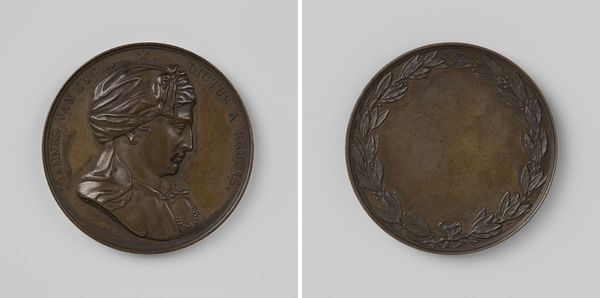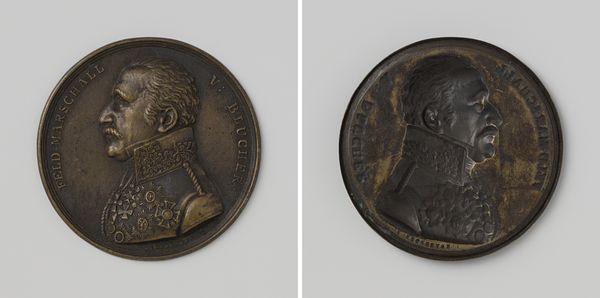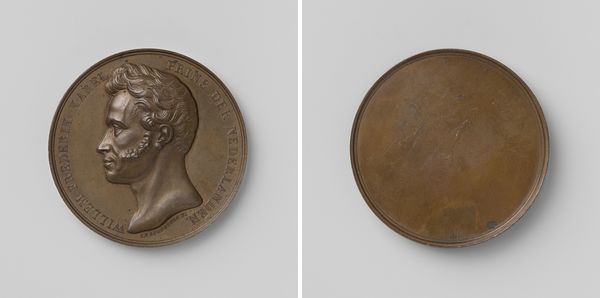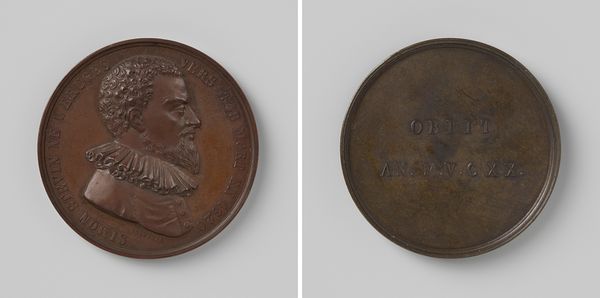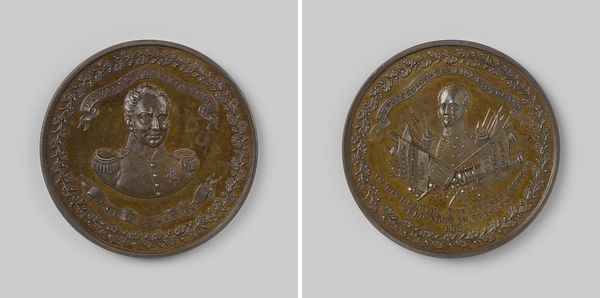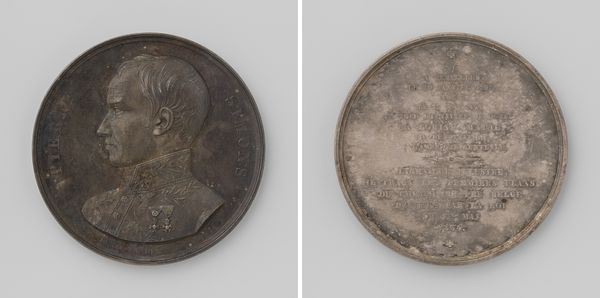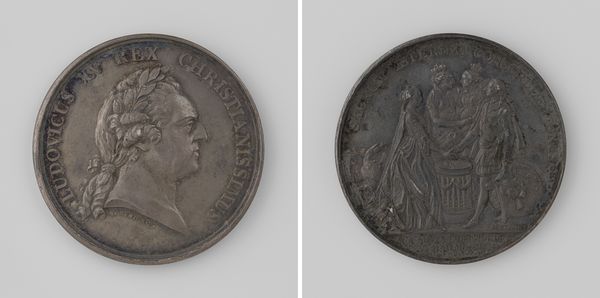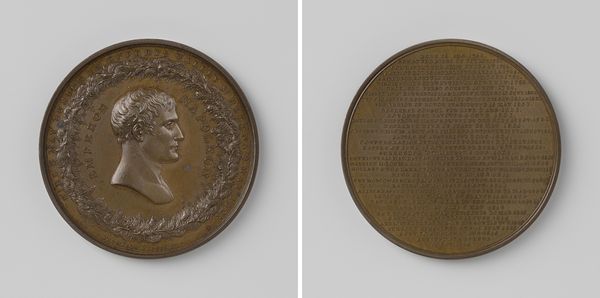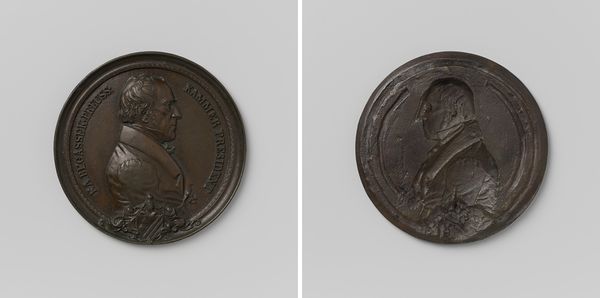
bronze, sculpture
#
portrait
#
neoclacissism
#
sculpture
#
bronze
#
sculpture
#
statue
Dimensions: diameter 2.2 cm, weight 0.72 gr
Copyright: Rijks Museum: Open Domain
Curator: Here we have a bronze sculpture depicting Willem I, King of the Netherlands, created sometime between 1815 and 1843 by an anonymous artist. Editor: It has a distinctly somber tone, doesn't it? The subject's gaze is rather stern. The round form is compelling in how it both contains and, in a way, flattens the figure, doesn't it? Curator: Absolutely. And understanding its historical context is vital. Willem I’s reign was marked by the creation of the Kingdom of the Netherlands after the Napoleonic era, an attempt to consolidate power and redefine national identity. The visual language here pulls from Neoclassicism which often evokes notions of order and authority. Editor: Right. The piece reads to me as a careful construction of power—a controlled image. He's in military regalia, complete with epaulettes and decorations, consciously projecting a message of strength and leadership at a critical juncture. Consider what the symbol means when representing male dominance and royal power. How can this be recontextualized to include current intersectional narratives? Curator: And it's important to remember how images like these operated within a larger visual culture. Bronze sculptures of rulers were not simply portraits, but also instruments of state, circulated widely to reinforce a particular image of kingship. The location in Rijksmuseum further institutionalizes this public persona, turning personal identity into national legacy. Editor: You are spot-on. But let's think beyond the image the work means to reflect: Who was the target of that masculinity and royal figure? Curator: Well, certainly the Dutch populace, newly unified, but perhaps also neighboring powers—a visual statement on the European stage. Editor: A loaded political message through material and artistic method. That has resonance even today, right? Curator: Definitely. And now, what initially struck us about the sculpture—its somber tone—begins to reveal itself as something far more complex: a deliberate exercise in image-making and myth-building in the service of a nascent nation. Editor: It leaves me thinking about the ongoing power dynamics and societal reflection, the potency and paradox that exist when portraying our leaders and shaping our societies.
Comments
No comments
Be the first to comment and join the conversation on the ultimate creative platform.
